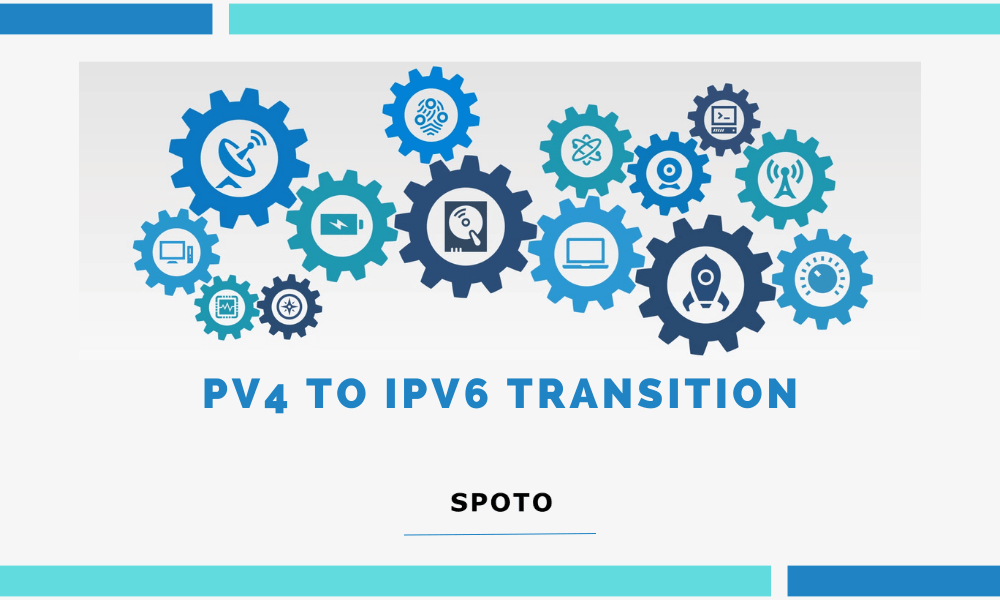
Table of Contents
The CCNP Enterprise certification focuses on developing advanced skills for networking professionals in building large enterprise networks. In this process, the transition from IPv4 to IPv6 is particularly crucial. The purpose of this article is to clarify the importance of the IPv4 to IPv6 transition in the CCNP Enterprise certification, discuss its application scenarios in modern enterprise networks, and provide conversion strategies and technical guidance for network engineers.
I. IPv4 to IPv6 Transition
The CCNP Enterprise certification is one of the advanced certifications in Cisco's professional qualification system and is designed to build networking professionals' expertise in designing, deploying, managing, and maintaining complex enterprise networks. This certification not only validates the candidate's in-depth understanding of enterprise-level networking solutions, but also demonstrates their professional standing in the field of network engineering. CCNP Enterprise certification holders typically have the ability to implement efficient, secure, and scalable networks in large enterprise environments to address the various cyber challenges facing today's enterprises.
The transition from IPv4 to IPv6 is an indispensable topic in the CCNP Enterprise certification. As the transition to IPv6 accelerates across global networks, this transition process is critical to maintaining the long-term sustainability of enterprise networks. The CCNP Enterprise certification emphasizes understanding and practical competency in this transition process, including:
- Planning & Design: Learn how to plan IPv6 deployments in enterprise networks, including address allocation, routing protocols, and network security.
- Technical implementation: Technical ability to implement IPv6 networks and IPv4 and IPv6 coexistence environments.
- Transition Management: Understand and be able to manage the various technical and business challenges that may arise during the transition from IPv4 to IPv6.
- Best Practices: Familiarize yourself with industry best practices to ensure a smooth and efficient network conversion process.
With CCNP Enterprise certification, professionals are able to ensure that their enterprise networks are future-proof for technological developments while maintaining business continuity and network performance. This certification not only reflects the professional competence of professionals in the field of network engineering, but also provides strong support for their career development.
II. Overview of IPv4 vs. IPv6
IP addresses are key to ensuring that information is accurately delivered to every corner of the globe. However, with the rapid development of network technology, we are facing a major turning point: the problem of IPv4 address exhaustion. At the same time, IPv6, as a new generation of Internet protocols, carries the key to solving this problem. Let's dive into the limitations of IPv4 and the revolutionary benefits that IPv6 brings.
Limitations of IPv4
The exhaustion of IPv4 addresses is a major challenge in the development of networks. IPv4 uses 32-bit addresses, which theoretically provides about 4.3 billion addresses. However, with the proliferation of the internet and the proliferation of smart devices, these addresses are no longer enough to meet the needs of the global network. Address exhaustion limits the network's ability to scale, affects the deployment of new services and technologies, and increases the complexity of network management and maintenance.
Advantages of IPv6
As the successor to IPv4, IPv6 offers several significant advantages:
- Larger address space: IPv6 uses 128-bit addresses and can provide far more addresses than current and future needs, which provides ample room for the development of emerging technologies such as the Internet of Things (IoT).
- Better security: IPv6 is designed with security in mind, supporting IPsec (Internet Protocol Security), making data transmission more secure and reducing the need for additional security configurations.
- Mobility support: IPv6 mobility support enables devices to stay connected while moving around the network, which is especially important for mobile devices and wireless networks.
- Simplified network configuration: IPv6 supports automatic configuration of stateless addresses, simplifying the configuration process of network devices and reducing management overhead.
- Improved performance: The IPv6 design optimizes routing performance, reduces the size of routing tables, and improves data transmission efficiency.
These advantages of IPv6 make it ideal for addressing the limitations of IPv4 and provide a solid foundation for future network development.
III. Technical Basis for IPv4 to IPv6 Conversion
IPv4 to IPv6 conversion technologies are crucial during the transition period, as they not only help solve the compatibility issues between IPv4 and IPv6, but also provide network administrators with flexible transition strategies to adapt to the needs of network upgrades at different stages.
Dual-stack technology
Dual-stack technology is a way to support both IPv4 and IPv6 on a single network interface. This means that the device will be able to use both protocols at the same time, maintaining compatibility with legacy IPv4 networks during the transition, while also being able to communicate with emerging IPv6 networks. Implementing a dual stack primarily involves configuring network devices so that they can process and forward both types of packets. This typically involves assigning IPv4 and IPv6 addresses on network interfaces and ensuring that devices such as routers and firewalls support dual-stack operation.
Tunneling technology
Tunneling technology allows IPv6 packets to travel over an IPv4 network. This is achieved by encapsulating IPv6 packets within IPv4 packets, allowing IPv6 packets to pass through IPv4-only network infrastructures. Common tunneling technologies include 6to4, Teredo, and ISATAP. For example, 6to4 allows IPv6 networks to interconnect over IPv4 networks, while Teredo supports IPv6 communication through NAT devices.
Conversion technology
Conversion technology is another way to achieve interoperability between IPv4 and IPv6 networks. NAT64 and IVI are the two main conversion technologies:
- NAT64: This is a network address and protocol translation mechanism that allows devices in an IPv6 network to communicate with devices in an IPv4 network. The NAT64 device translates the address in the IPv6 packet into an IPv4 address and translates the header protocol information accordingly, enabling two networks with different protocol stacks to communicate with each other.
- IPv4-Embedded IPv6 (IVI): IVI technology implements stateless address translation by embedding IPv4 addresses in IPv6 addresses. This enables devices in an IPv6 network to directly access resources in an IPv4 network without the need for a complex address translation process.
IV. IPv4 to IPv6 Translation Policy in CCNP Enterprise
Through the CCNP Enterprise certification, network engineers will gain the necessary knowledge and skills to design and implement an effective IPv4 to IPv6 conversion strategy that ensures a smooth transition and long-term success of the network.
Network Design
Under the CCNP Enterprise framework, the design of an IPv4-to-IPv6 network architecture requires comprehensive consideration of multiple levels:
- Layered design: The modular design ensures that each layer of the network supports dual stacks, simplifying management and increasing flexibility.
- Routing policy: Design an efficient routing policy that takes advantage of the new features of IPv6, such as the simplified header format, to optimize routing paths.
- Address management: Develop a detailed address allocation plan and take advantage of IPv6's address space to achieve automatic address allocation and more granular address management.
- Security architecture: Strengthen IPv6-specific security features, such as enforcing the use of IPsec and developing protection measures against emerging security threats.
Transition Mechanisms
The choice of transition mechanism needs to be tailored to the specific circumstances of the organization:
- Dual-stack deployment: Running both IPv4 and IPv6 in an existing network, gradually migrating services and applications to IPv6, such as Google and Facebook, have successfully implemented dual-stack deployments globally.
- Tunneling technology: For parts of the network that do not have direct access to IPv6, use tunneling technologies such as 6to4 or Teredo, for example, some large enterprises use 6to4 tunnels in their internal networks to connect remote IPv6 sites.
- Conversion technology: During the coexistence of IPv4 and IPv6 networks, NAT64 and IVI technologies are used to achieve interoperability between the two protocols, for example, some service providers use NAT64 to enable IPv6 users to access IPv4-only services.
Conclusion
In conclusion, the adoption and implementation of IPv6 has become paramount for the sustained growth and development of the global internet. IPv6 not only solves the critical issue of IPv4 address exhaustion, but also lays the foundation for the advancement of emerging technologies like the Internet of Things, 5G, and cloud computing. With its enhanced security features and support for mobility, IPv6 is poised to play a pivotal role in optimizing network performance, strengthening network security, and enabling the rapid deployment of new services - ultimately driving the evolution of the entire internet ecosystem.
Correspondingly, the CCNP Enterprise certification has gained significant prominence as an advanced certification in network engineering. This credential not only demonstrates a professional's expertise in designing, deploying, and managing complex enterprise networks, but also their ability to adapt and lead on the latest networking technology trends, such as IPv6. Given the growing demand for IPv6-skilled professionals, CCNP Enterprise certification holders will find increased industry recognition and greater career development opportunities.
Therefore, for network engineers seeking to advance their careers, mastering IPv6-related knowledge and obtaining the CCNP Enterprise certification is undoubtedly a strategic path to enhance personal competitiveness and establish technological leadership. As the global transition to next-generation internet protocols accelerates, the professionals who can guide and spearhead this change will play an increasingly critical role in shaping the future of the network.










